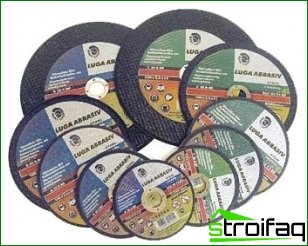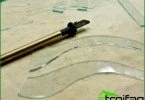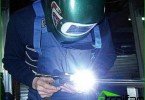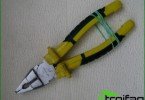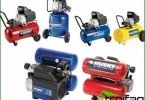In working with an angle grinder or grinder, various consumables may be needed, among which abrasives play an important role. This is due to the fact that grinding, cutting and grinding wheels are the most popular consumables that are used in work.
Depending on the purpose, consumables can be divided into several categories. Some are made for cutting building materials, others are used for grinding, cleaning, peeling, rust removal and polishing. And some products are used for processing various surfaces: natural stone, concrete, wood and others. let’s consider, how to choose an abrasive wheel.
Getting to the Choice
In working with an angle grinder or grinder, various consumables may be needed, among which abrasives play an important role. This is due to the fact that grinding, cutting and grinding wheels are the most popular consumables that are used in work.Depending on the purpose, consumables can be divided into several categories. Some are made for cutting building materials, others are used for grinding, cleaning, peeling, rust removal and polishing. And some products are used for processing various surfaces: natural stone, concrete, wood and others. let’s consider, how to choose an abrasive wheel.
Getting to the Choice
First of all, you need to familiarize yourself with the inscription on the abrasive. Whatever the abrasive wheel, on it you will always see a huge number of inscriptions that carry a certain information load. These labels will tell us specific product information. If the circle meets international standards, it can be seen marking, made in the form of a picture, informing the buyer about the materials that were used in the manufacture of the product.
In the picture you can see the image of ceramic tiles, stone, metal profiles, reinforced concrete, etc. In addition, on the circle there is sometimes an image of protective headphones, a respirator and gloves, which will remind you of the use of personal protective equipment. Some symbols indicate the need to use cooling in working with the circle. For hand tools, circles are marked with reinforcement. And for stationary machines – C. This is also important to consider when choosing abrasive wheels. In addition, on the circle you can see its dimensions: thickness, diameter of it and the landing hole, the value of the permissible rotation speed is also plotted on it.
We continue to study the inscriptions
In addition, the material for which it is intended must be indicated on the abrasive wheel. Many manufacturers of metal-framed landing holes indicate the shelf life of the abrasive. And this characteristic should be paid attention to. In some cases, circles are sold at very low prices, and the reason for this is the expiring or expired warranty period of the product. If you decide to use such circles, you should be aware that you are risking your health, as well as the health of those people who are nearby.
When choosing an abrasive wheel, be sure to pay attention to the rotation speed for which it is designed: it must be higher than the one at which the grinder works. Quite often on sale you can see circles with a red strip. This designation is typical for diamond, abrasive, flap, cutting, grinding, polishing and grinding wheels. In addition, a colored strip may be applied in the middle of the product, the color of which indicates the maximum rotation speed of this circle.
Circles with a green stripe are designed for a speed of 100 m / s, with red – 80 m / s, and with yellow – 63 m / s.
Other important indicators
The letter F will indicate the size of the grain with which the abrasive was made, and other English letters will tell about its hardness. The material of the circle is connected using special connecting ligaments. Bundles come in various types: B – Bakelite, V – Ceramic, B4 – Bakelite with graphite filling, BF – Bakelite with hardening. The material from which the circles are made is also subject to marking: A corresponds to electrocorundum, B to elbor, C to silicon carbide, D to diamond.
So far we have been considering the most common varieties of abrasives. Further, the designations may differ. And this is not surprising, because diamond blades in their composition do not have those materials that are used in abrasive wheels. Other differences are that abrasive belts are used in the cleaning flap wheels, in which their size is indicated by the letter R. If these parameters do not cause confusion, you can quickly and correctly choose abrasive wheel. We hope that our recommendations will help you in this matter..
